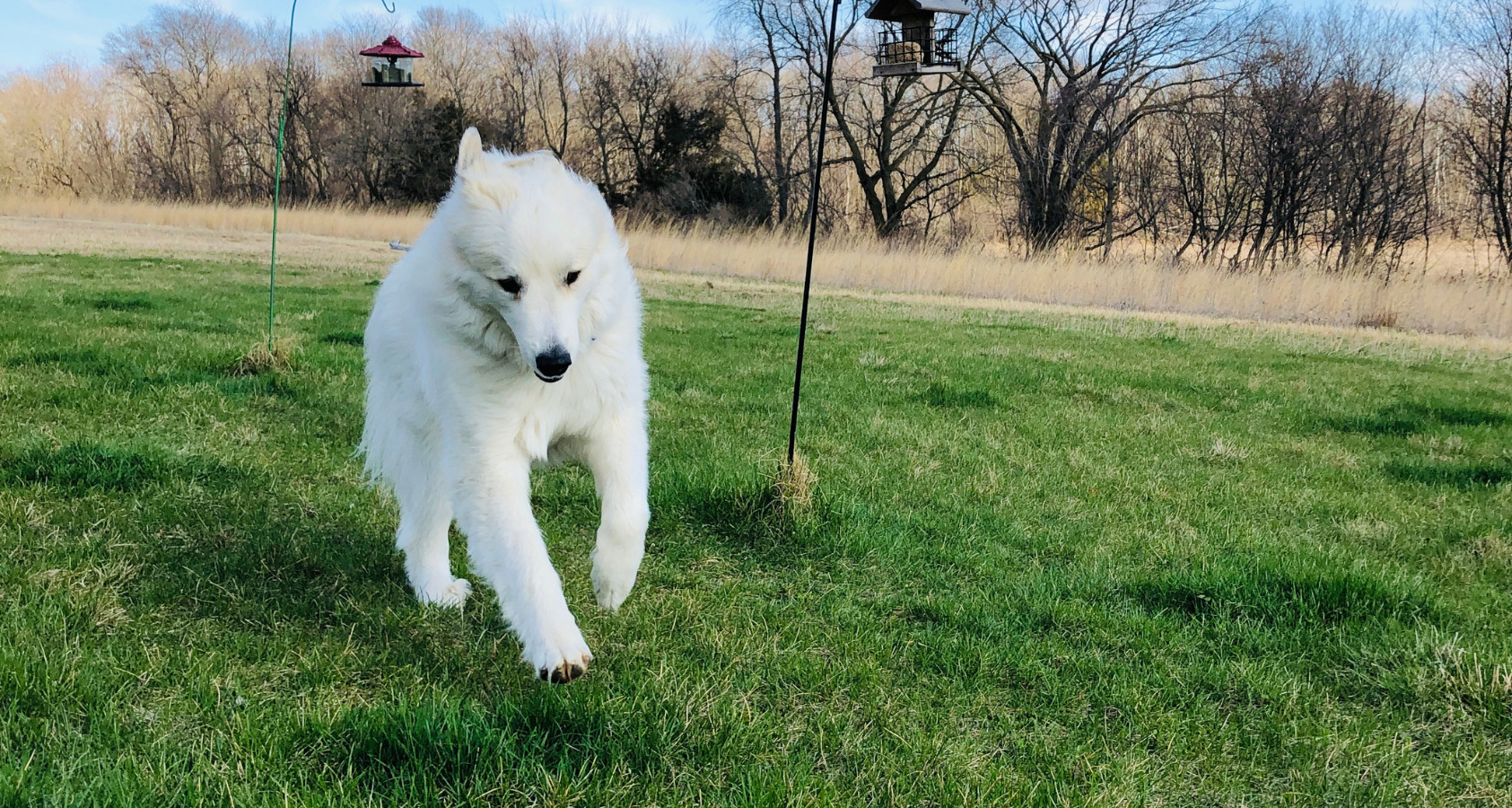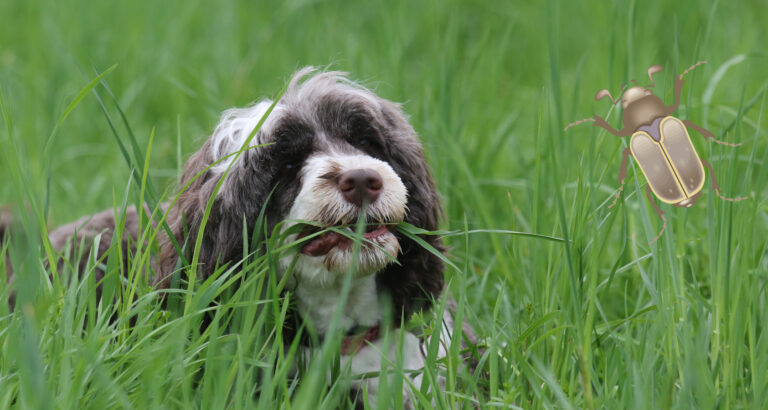Great Pyrenees and Double Dew Claws
Last updated on March 20th, 2023 at 08:30 pm
Reading Time: 6 minutesThis post may contain affiliate links. If you click and buy we may make a commission, at no additional charge to you.
Great Pyrenees and Double Dew Claws
Great Pyrenees are believed to have originated in the lands of central Asia or Siberia as far back as 11,000 years ago. This breed has a long history of guarding sheep in high mountain regions. Over time, the breed, with its patient and loving disposition, made its way into people’s hearts due to its desire to work, protect, and play.
Commonly used today as guardians for flock animals, Great Pyrenees are also popular family dogs due to their calm and patient temperament and their smarts. One of the most unique features of Great Pyrenees is their double dewclaws – which look like extra toes or nails growing out of the backside of their back feet!
Quick Answer: Why do Great Pyrenees have double dewclaws?
Great Pyrenees have double dewclaws to help them maintain stability while they travel across mountainous or rugged terrain.
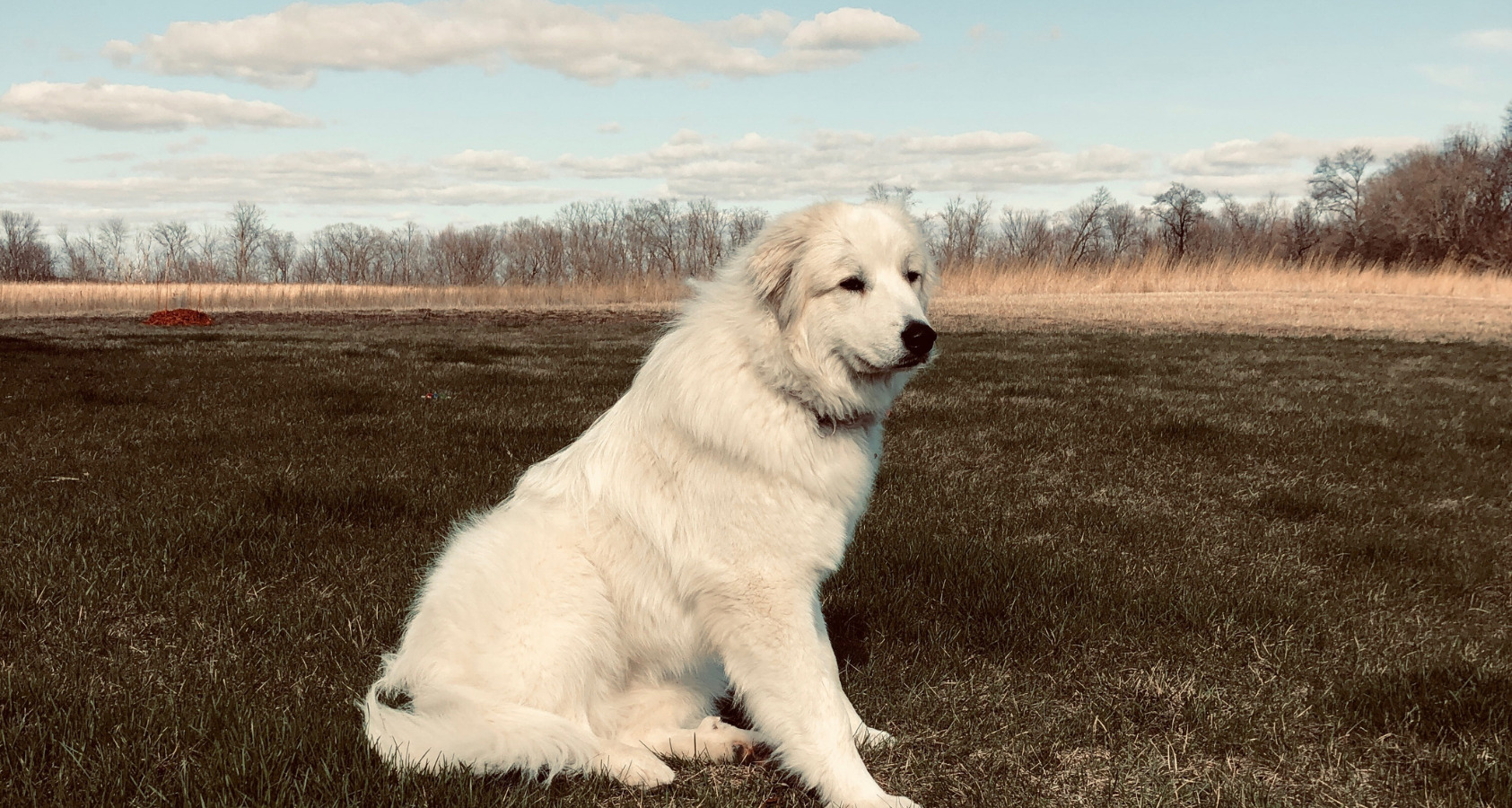
What Are Dewclaws?
In the simplest of terms, dewclaws are toes that can be found on both the front and hind feet of a dog. While many dogs have front dewclaws and sometimes even back dewclaws, Great Pyrenees are highly unique in that they have double dewclaws! Usually, on the back feet, double dewclaws are just as they sound- two nails or claws located just slightly higher than the foot on the inner side of its back legs.
When looking at the bottom of the dog’s foot, you’ll see them at the back of the foot, slightly above the dog’s pads. Most people are shocked when they see them for the first time. “That dog has extra toes!” they might say. But for Great Pyrenees, double dewclaws are considered an essential part of the breed standard.
Types of Dewclaws
There are two types of dewclaws in the canine world. The first and most common type is a digit or toe, which is attached to the structure of the dog’s foot only by skin. The other type of dewclaw is a digit or toe (or two) attached by a dedicated bone to the structure of the dog’s foot.
Why Do Dogs have Dewclaws?
For most dogs, dewclaws found on their hind legs are purposeless. They are generally not attached by bone but by skin and tend to be floppy, and are at risk of being snagged or ripped. If a dog has dewclaws like this, a vet will most likely recommend removing them in a simple procedure. It is usually done when the dog is neutered or spayed.
Great Pyrenees have dewclaws, specifically double dewclaws, because they serve a purpose. A Great Pyrenees’ double dewclaws are attached by a specific bone. This bone makes the double dewclaws strong and sturdy. Some say they act almost like a thumb for the dog!
While other dogs may have had dewclaws or even double dewclaws thousands of years ago that served a purpose, they no longer are useful today. But for Great Pyrenees, who throughout history have been bred to guard flocks while navigating mountainous terrains, the double dewclaw remains and still serves its original purpose. The purpose of double dewclaws for Great Pyrenees is to help them maintain their stability when they have to navigate rugged terrain.
When you watch how a Great Pyrenees moves, you’ll likely be able to see and understand how it uses its double dewclaws. When turning sharply, climbing up or down, and even when jumping, a Great Pyrenees will use its double dewclaws as a means for additional stability and traction.
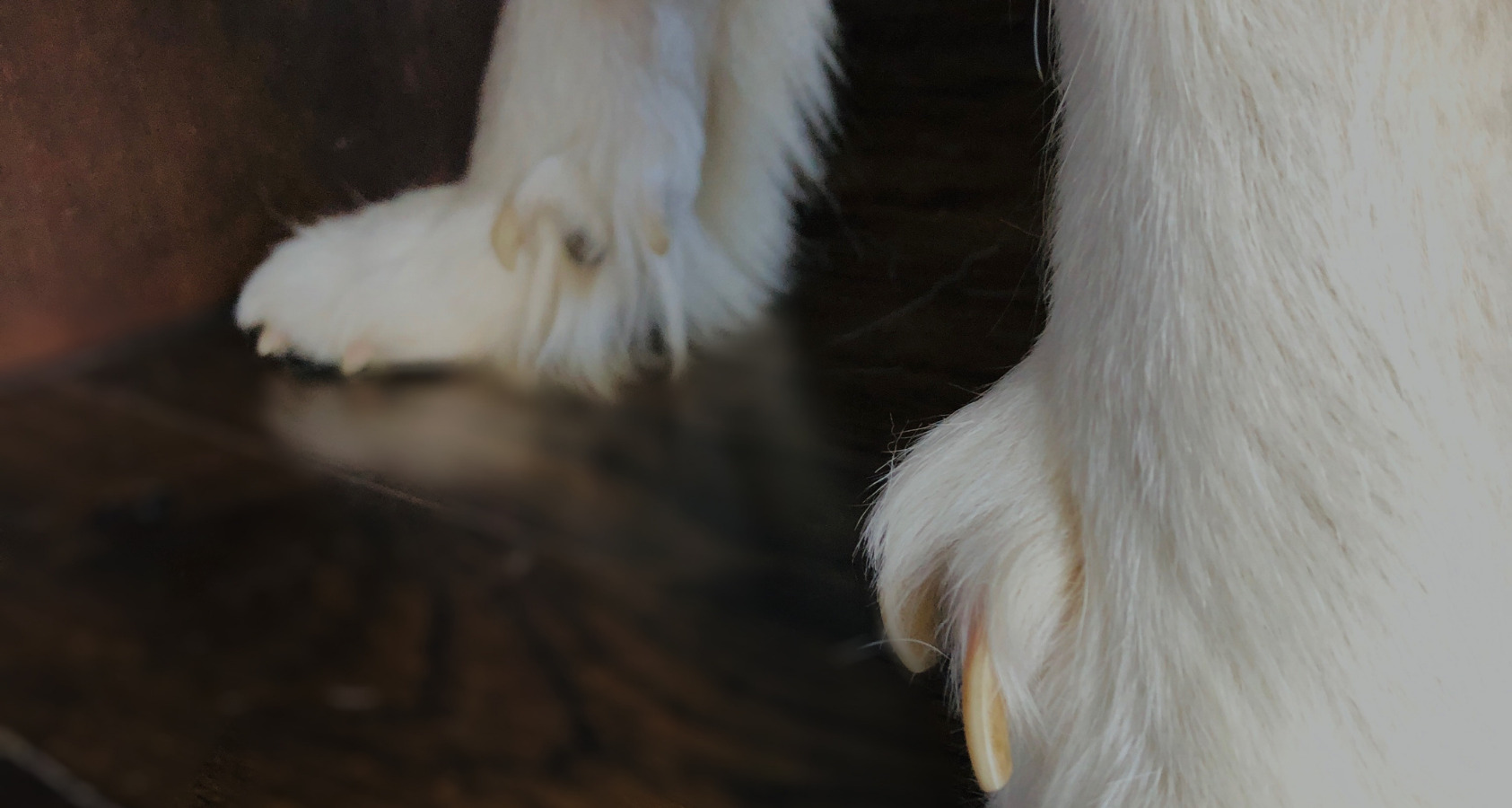
No, to dewclaw removal
Great Pyrenees will rarely ever need their double dewclaws removed, but for the type of dewclaws that aren’t attached by bone, many owners choose to have them removed by their vet. For most dogs, they don’t serve a purpose and can cause trouble down the road if they get snagged or ripped on something.
Some vets will mistakenly encourage Great Pyrenees owners to have their dog’s double dewclaws removed because they think, like other dogs, they might do more harm than good. However, this can be a highly invasive and unnecessary procedure for a Great Pyrenees since a double dewclaw poses minimal risk to the dog and is beneficial.
A double dewclaw removal for a Great Pyrenees is a legitimate amputation of the toes or digits. The muscles, nerves, tendons, and even bone that attach the dewclaws to the dog’s foot would need to be severed or cut through.
A procedure like this will change the structure of the dog’s foot and force the dog to relearn how to walk. It can be especially harmful if performed before the dog is finished growing since it would affect how the dog’s paws grow.
Like our toes, there are bones on the inside and a nail (or claw) on the outside. You wouldn’t amputate your own toe unless it were an emergency or medically necessary. Neither should a Great Pyrenees.
Should Double Dewclaws ever be removed?
Unfortunately, in some rare cases, there can be reasons removal of a double dewclaw might be medically necessary for a Great Pyrenees.
One example might include the nail or claw becoming ingrown. Because Great Pyrenees are so fluffy, it may be hard to notice any problems until your dog is in pain from a swollen or infected dewclaw. For example, the nail or claw may have grown so long that it curled in on itself and began to grow into your dog’s skin or paw pad. As you might imagine, this is painful for the dog.
Your vet may be able to save the structure of the dewclaw by cutting the nail and pulling it out of the wound in the skin or paw and then treating the wound. But if this dewclaw frequently becomes overgrown for some reason, you and your vet might consider removal. Usually, when walking on gravel, concrete, pavement, etc., dogs’ nails tend to get worn down or even filed down. But because dewclaws don’t typically touch the ground, they can get overgrown much quicker and end up growing into the dog’s ankle area or paw pad. Ask your vet or groomer to teach you how to trim them yourself in between appointments to keep this from happening.
A double dewclaw getting caught on things can be another reason it may need removal. The nail should always be kept short, but it can still get stuck or snagged on rocks, textured terrain, greats, etc. In most cases, an injured dewclaw would be a rare occurrence for a Great Pyrenees. But if it happens regularly and causes your dog undue pain and distress each time, you and your vet might consider removal.
As with any part of the body, dewclaws too can develop diseases, infections, tumors, or bone cancer. In some cases, amputation may be the best option for keeping the disease or cancer from spreading. Persistent infection can also be a sign of underlying health issues like thyroid problems or autoimmune disease.
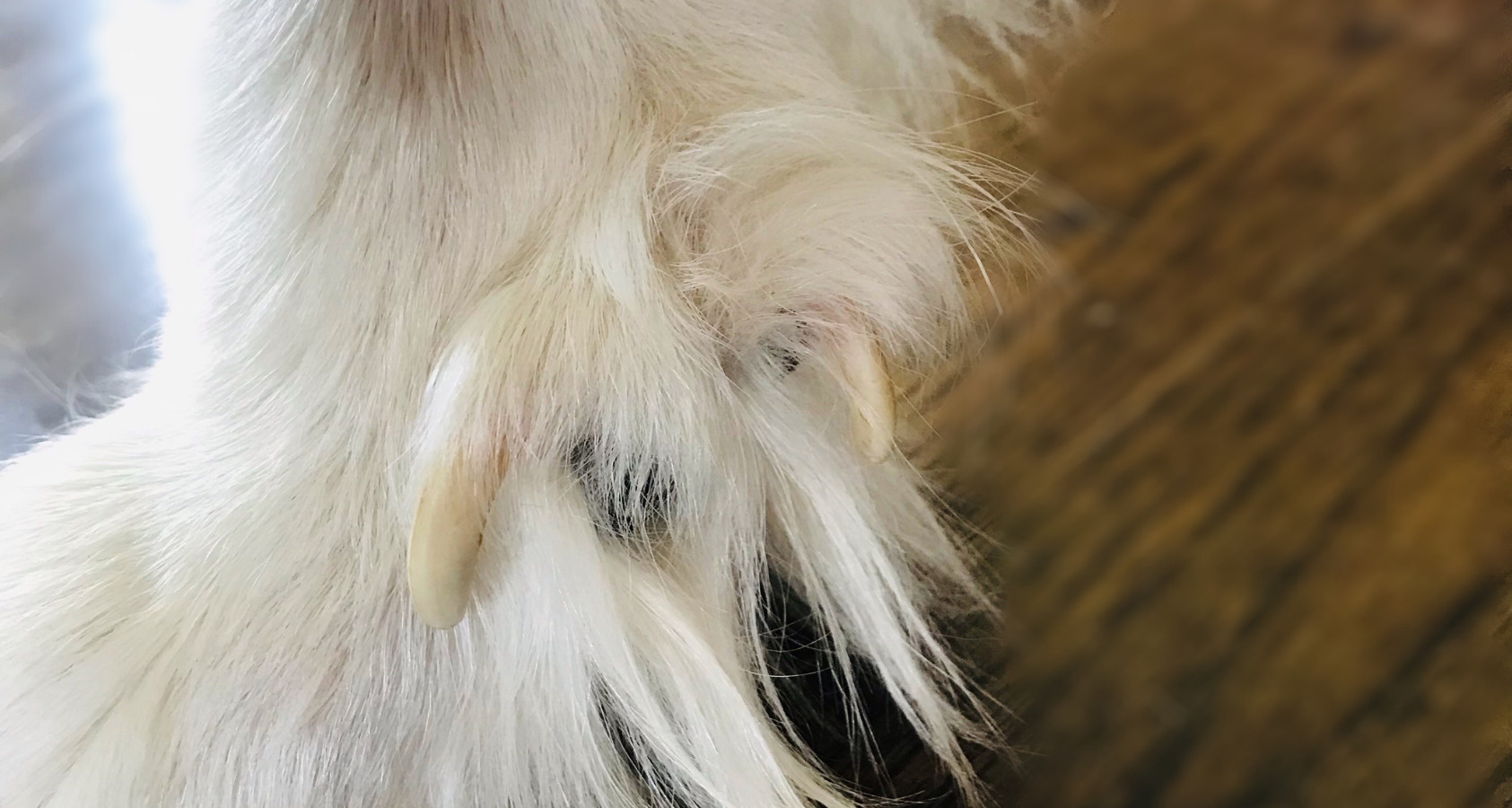
Conclusion
In conclusion, a Great Pyrenees’ double dewclaws do indeed serve a purpose and are important to the breed standard. Though they may look a little funny, they are still beneficial. Your Great Pyrenees will most likely want to keep them!
About The Author
I'm a content writer and researcher. But bottom line, I loveee animals. I had my first animal which was a guinea pig at age 8. Later had a bunny, dog and a lot, a lot of fish. Writing about what I know about pets will allow me to share my knowledge and love for them with everyone else. Dealing with dogs my entire life, I know a lot.

